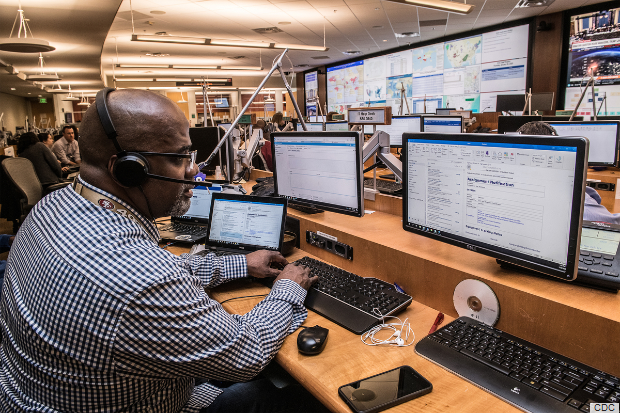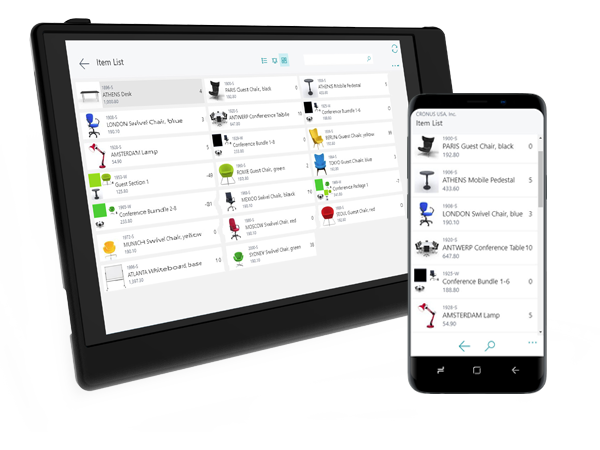
Front line healthcare workers have been swamped since the coronavirus outbreak by the number of calls from patients who want to speak with their doctors about possible symptoms for COVID-19. Many health systems are turning to self-triaging tools to help consumers check for symptoms before asking to be put through to a doctor. Providence Health in Washington State, which was Ground Zero for the pandemic in the US, has reconfigured their chatbot Grace with frequent Asked Questions and assessments related to COVID-19 symptoms. Sara Vaezy, Chief Digital Strategy Officer at Providence Digital Innovations Group, states that they saw 70,000 patient logins and over one million messages come in through the chatbot in the first month of the outbreak. To put the numbers in perspective, virtual visits were 10-15 times more than pre-pandemic levels.
However, the challenge doesn’t end there. Patients who get triaged for COVID-19 screening have had to wait in a virtual queue because of the sudden spike in the number of virtual visits. The lack of available trained clinicians to take on virtual consults has exacerbated the problem (my daughter, who lives in Chicago had to wait for a day for a video visit with her doctor after coming down with a cold). To address the surge, Providence Health redeployed their same-day Express Care clinicians to attend to the newly triaged patients coming in through the chatbots. Elsewhere in the country, health systems are going through some variation of this scenario. As health systems streamline their processes and bring more clinicians on board, the learning curve will flatten out as well, eventually, the intake volumes as we climb out of the pandemic.
Not all online triaging tools are seeing the same levels of success. Silicon Valley tech firms, always quick to respond with technology to marketplace needs, have seen a lukewarm response to new tools by startups and big tech firms. Google parent Verily’s symptom triaging tool for COVID-19 came under criticism from privacy advocates, highlighting the lack of trust that epitomizes the challenges for digital health companies in general.
The mainstreaming of Telehealth
Out of every crisis, a new opportunity arises. For telehealth, it may be an opportunity whose time has finally come. The volumes of telehealth consults have gone up several multiples since the pandemic struck. John Kravitz of Geisinger Health has seen a 500% increase in telehealth visits within the first couple of weeks since the outbreak. In anticipation, Geisinger has trained over 1000 providers (and counting) on conducting telehealth visits with patients. Telemedicine platforms are also enabling patient families to speak with their loved ones in acute care. While most health systems seem to have successfully scaled up their telehealth operations, some have seen a rise in wait times that have negated the premise of “on-demand” care through virtual health tools. Others, such as Cleveland Clinic, have seen the technology struggle to keep up with a 10x increase in volumes.
The use of telehealth has been growing in the past few years, though more slowly than expected. One major cause has been the lack of a reimbursement model for telemedicine that puts it on par with in-person visits. Recognizing the need to promote telehealth as a public health and safety issue, the Government has brought reimbursements for telehealth on par with other visits. We may be seeing a tipping point that takes telehealth mainstream in one stroke, transforming the way we experience health care in the future. Most importantly, the public at large will get used to telehealth visits as an acceptable way of obtaining health care for low-acuity needs.
The Coronavirus crisis may be a tipping point if we look across time horizons for the future of healthcare, for how we live and work, and even the future of the planet.
Digital transformation will accelerate
Some degree of reprioritization of ongoing enterprise IT projects is inevitable under the current circumstances. However, many health systems, such as UPMC and Geisinger Health in Pennsylvania, are accelerating their digital transformation roadmaps, encouraged by the success of telehealth in responding to the crisis and also sensing a fundamental shift in health care delivery. Healthcare organizations are intensifying their focus on strategic planning for a digital future and are preparing themselves to be ready to launch new initiatives when the crisis passes.
Cybersecurity risks will rise in the short term
Most health systems have managed to stay ahead of cybersecurity attacks so far during the pandemic. However, it is a matter of time before cybercriminals swoop in to take advantage of heightened vulnerabilities. Earlier in March, the Champagne-Urbana Public Health District in Illinois was hit by ransomware and paid $350,000 to regain access to its website. The World Health Organization, The Dept of Health and Human Services, and several state and local agencies have been targeted. Health systems that have seen a doubling of their remote workforce have had to enable staff with Virtual desktop interfaces (VDI) and connectivity devices to connect to enterprise IT systems seamlessly with minimal data flow between devices in and outside firewalls. However, despite strong endpoint security, this large-scale shift to a virtual workforce also exposes new vulnerabilities waiting to be exploited.
How we live and work may have changed forever
If we take a slightly longer view, the tipping point we are experiencing is playing out through how companies are reorganizing their workforce around virtual workplace models, using video-conferencing and other virtual collaboration tools. As employees and employers get serious about maintaining productivity and effectiveness in the current crisis, companies and public health agencies will apply the learnings from the present crisis to find ways to repurpose existing assets in preparation for the next crisis. Across the land, hotels are turning into makeshift hospitals; sport and concert arenas are turning into logistics hubs. What’s to stop the Government from mandating building codes that require a degree of “repurposability” in the future?
The benefits to society from such a shift maybe even more profound. Reduced travel and commutes will reduce carbon emissions, paving the way for a reversal of climate change. Think this is too far-fetched? Check out this dramatic visual of air pollution levels in China before and after the coronavirus outbreak.
Now, Coronavirus has dwindled economic ordinances, market systems and puts more humans at risk, we at Growth Capital Group have designed a simplified and unified technology called “e-Doctor” for any public health institution that needs a modern health care tool to manage the virus containment.
e-Doctor is a leading electronic health record and hospital management system for Africa. e-Doctor helps hospitals become more efficient and profitable. It is a robust system that connects every department seamlessly and also enhances oversight and management of operations.
To gather and aggregate data, health institutions can use e-Doctor for their agents and field workers. And in real-time, via e-Doctor Insights, experts can see a map of potential risks as data is collected.
With our technology, we can tell you locations with risk vectors. That way you can activate the local protocols based on the healthcare regulations in your locality.
Email and reach out to our team: [email protected].
Our fees have been waived including training your entire team.
It all starts here at http://growthcapital.ng/
Call +2348139319159 or send us an email to [email protected]
Click to chat with an expert today: https://wa.me/2348139319159
You can walk into any of our experience centers below to urge firsthand experience on all our platforms.
Island Location: 7b Dr. S Ezekuse Close, Lekki Phase 1, Lagos
Mainland Location: WorkStation Office, Maryland Mall, Anthony Lagos.
Abuja Location: 167, Adetokunbo Ademola Crescent, Wuse Abuja.
At Growth Capital Group, we grow with you!
Recent Posts
- How Countries are Preparing, Coping, and Planning for Recovery: How EduBase is helping Schools in this Pandemic Era.
- Why it Makes Sense to Move your Retail Management Software to the Cloud
- How EduPoint; One of Growth Capital’s Port-folio Companies is Improving the Way Students are Learning in this Pandemic
- 4 Omni-Channel Failures That Could Easily Have Been Avoided With the Right Management System
- TeleHealth in COVID-19: How e-Doctor is helping Hospitals.







Recent Comments